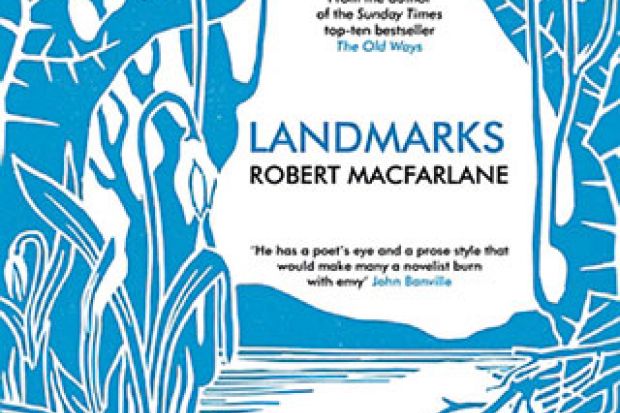These days, I often find myself quoting my favourite line from the repertoire of The Smiths: “Nature is a language – can’t you read?” What Morrissey is offering here is a way out of what I call the semiotic fallacy: the bizarrely widespread assumption that because human words give human shape and significance to the non-human world, the latter is otherwise inarticulate.
We could never accuse Robert Macfarlane of committing that error. Over the past decade or so, he has produced a number of books that really do help us read the natural world. Now, in Landmarks, he gives himself scope to be explicit about the way that human language can complement an already vocal landscape.
His method is to explore chapter by chapter the terminology that evokes specific environments: “Flatlands”, “Uplands”, “Woodlands”. Nearly all chapters offer a personal anecdote about a visit to a particular area, usually in the company of a nature writer he admires, or else with that writer’s book in hand.
The official term for this approach, I believe, is narrative scholarship, but that hardly does justice to Macfarlane’s beautifully crafted reflections on the experience of establishing and enjoying contact with the earth, with another human being, and with one’s own language. Nor does it convey the accumulative impact of the mind-expanding glossaries accompanying each chapter. Together they comprise a wondrous word-hoard.
As he explains, the book is informed by “the same questions concerning the mutual relations of place, language and spirit – how we landmark, and how we are landmarked”. To give a sense of what he’s about, we might ponder some of those terms he himself singles out. There is, for example, the intriguing word smeuse, a Sussex dialect noun for “the gap in the base of a hedge made by the regular passage of a small animal”. Again, it’s hard to resist such variant English terms for icicle as aquabob (Kent), clinkerbell and daggler (Wessex). Reflecting on them, I kept thinking of Keats: “The poetry of earth is never dead.”
Some readers may dismiss this as mere whimsy. But they should ponder the disturbing detail that Macfarlane includes in his opening chapter concerning the 2007 edition of the Oxford Junior Dictionary, in which there has been a “culling” of words concerning nature – acorn, cowslip, kingfisher, willow – as, at the same time, terms such as blog, chatroom and celebrity have been added. As Macfarlane ruefully remarks: “For blackberry read BlackBerry.”
Thus the impoverishment of our vocabulary goes hand in hand with our alienation from the earth. Thinking of Keats again, this language really is “dead”, and deadening too: it is, as Macfarlane suggests, a sure sign of a state of disenchantment. In his final chapter, he proposes that we rediscover the idiom he calls “Childish”, deriving as it does from that sense of wonder and innocent enjoyment in contact with nature that children have traditionally known but are now increasingly denied.
Looking back over Macfarlane’s writing career, it occurs to me that for him etymology and ecology have always been inseparable. Now, with Landmarks, the potential of the English language to counter what he calls the desecration of nature, and to promote its re-enchantment, is richly demonstrated.
Landmarks
By Robert Macfarlane
Penguin, 400pp, £20.00
ISBN 9780241146538 and 1967867 (e-book)
Published 5 March 2015





